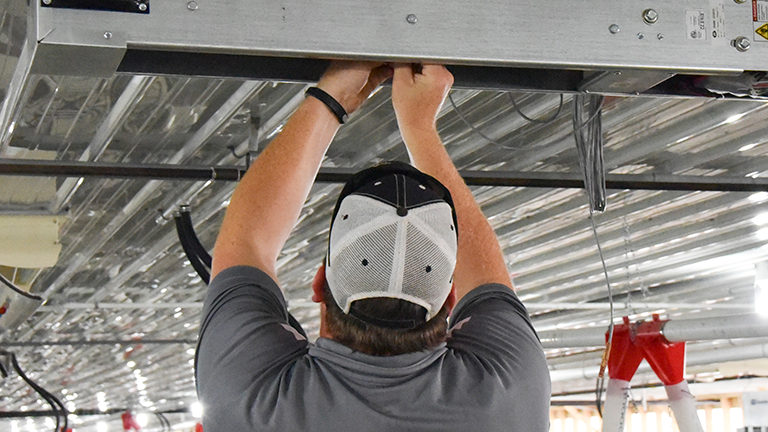Broiler producers can’t be in every barn at once; that’s why technology like smart controllers and sensors are helping producers do more with the time they have.
Unlike poultry barn controllers of the past, today’s smart controller systems, such as EDGE, are designed to manage much more than just ventilation. These systems use a variety of sensors to gather data from across the barn to better control the environment and learn from how birds behave and the barns operate.
Sensors like these are vital to getting the most out of a smart system:
- Temperature Sensor: Used to measure not only the internal and external temperature of the house but also variables such as the temperature of the water in the watering systems. These sensors are also important for controlling heaters and other barn equipment.
- Humidity Sensor: Widely used to measure internal barn humidity and in some situations, external barn humidity through a meteorological probe.
- Water meter (hydrometer): Used to measure the daily water consumption, it has huge importance due to the correlation between feed consumption and water consumption, if the chickens are eating, they are drinking (the opposite is also true). Through the water, consumption is possible to check the flock's performance, even some diseases or issues related to the water or watering lines also feed or feeding lines.
- Static Pressure Sensor: Static pressure sensors compare the external and internal pressure of the house with a goal of keeping the internal pressure constant. They help producers manage inlets, tunnel doors and exhaust fans to help maintain the most consistent air velocity and the greatest energy efficiency.
- Ammonia (NH3) Sensor: No less important than the other parameters, ammonia concentration is a serious problem that needs to be avoided, as excess ammonia causes damage to the development of the flock.
- CO2 Sensor: Just like temperature, humidity and ammonia, understanding CO2 concentration is essential for precision poultry production. The correct rate of air renewal can have a direct impact on flock development, and managing CO2 levels is even more critical during the brooding period - when direct burner heaters can increase the CO2 levels in the bird environment. The use of a CO2 sensor can also lead to energy cost savings, especially in the colder season when internal temperature is so important.
Connecting sensors to the EDGE controller is as simple as plugging them in to create a better environment for your birds.
CUMBERLAND EDGE CONTROLLER SAVES POULTRY PRODUCERS MONEY, REDUCES WEAR AND TEAR













